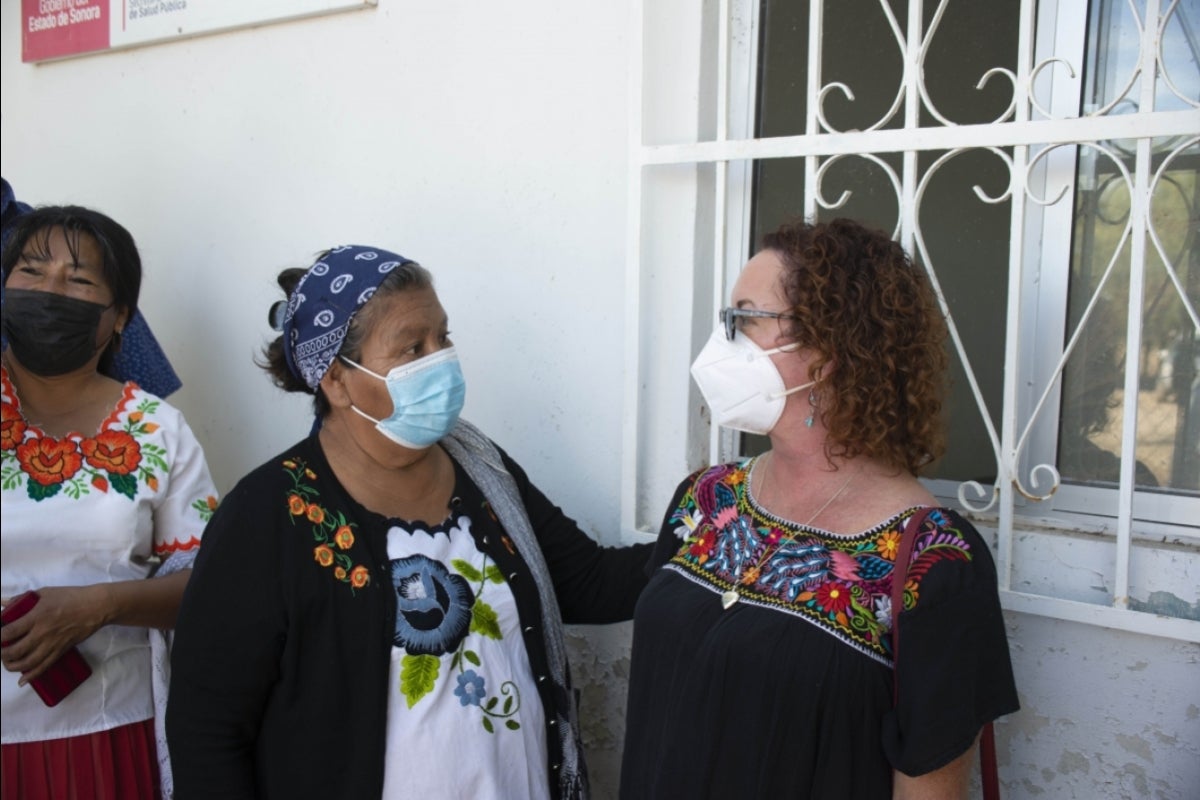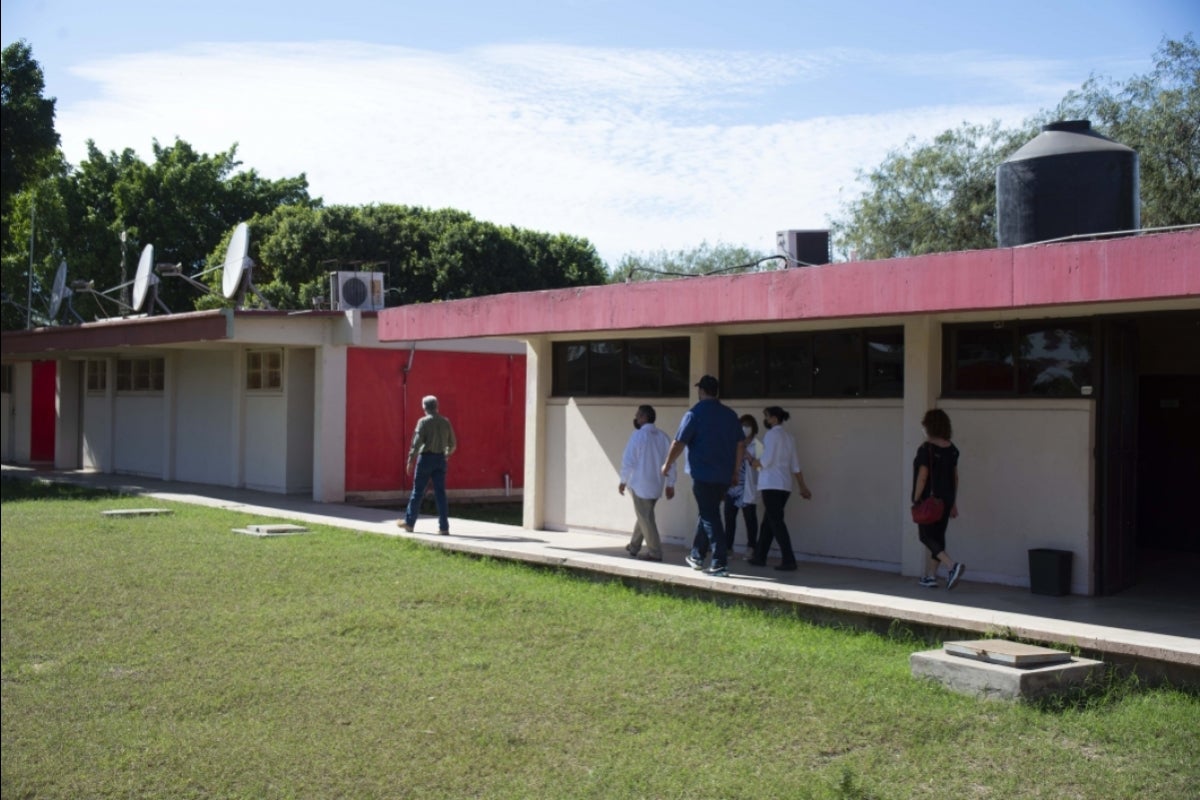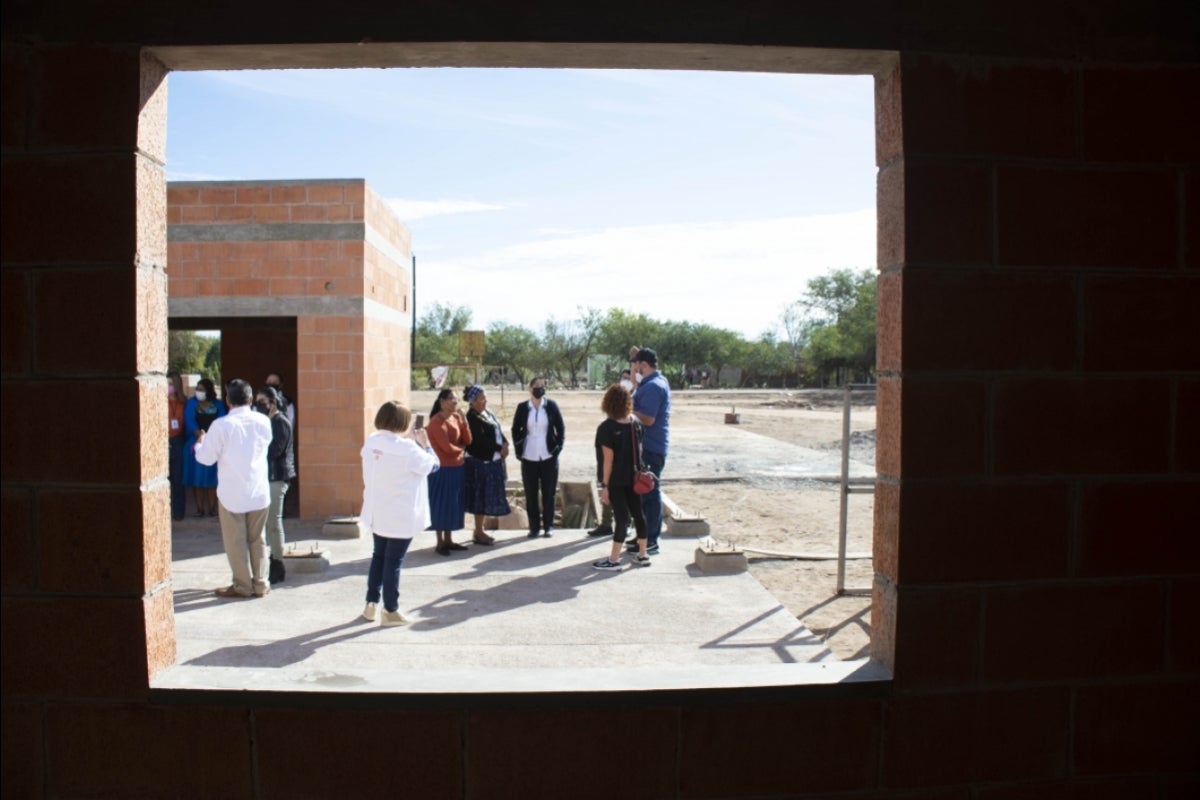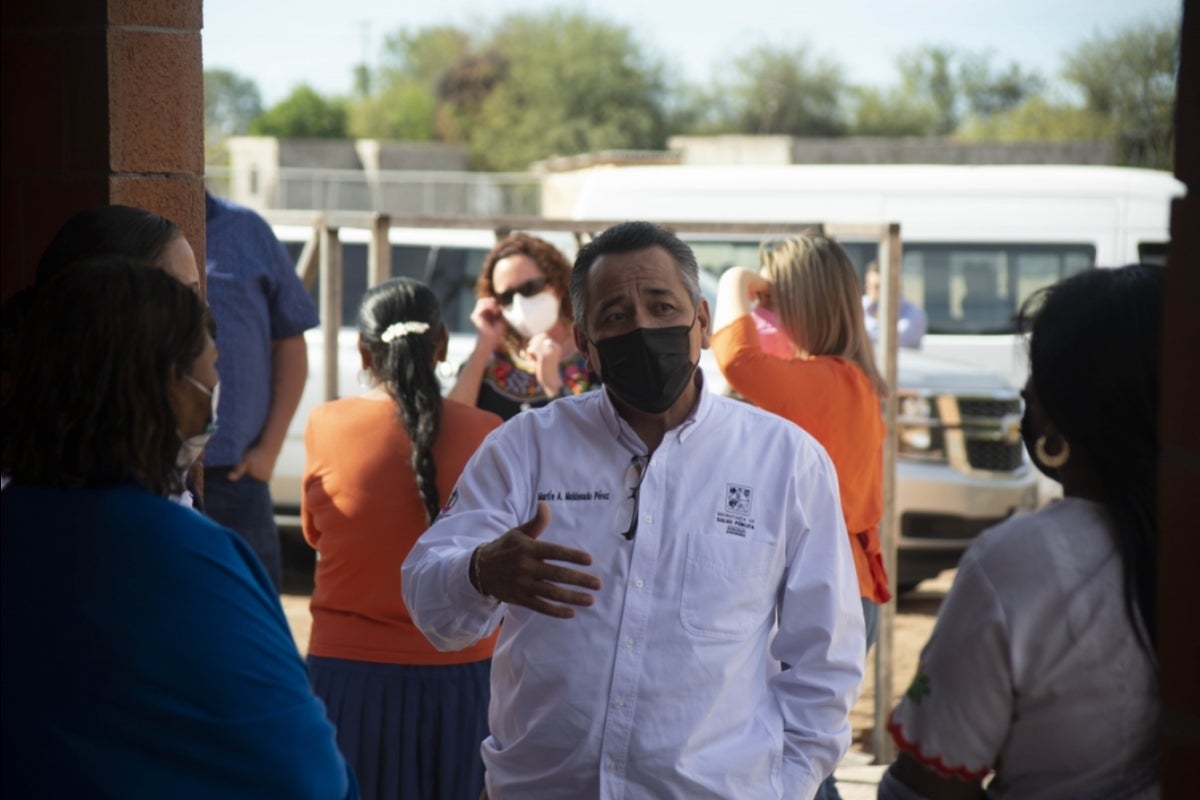During a meeting in October with Esteban Moctezuma Barragan, Mexico’s ambassador to the U.S., ASU President Michael M. Crow conveyed the university’s commitment to binational progress, particularly within the Arizona-Sonora region.
In that meeting and in others with university executives in late 2021, the ambassador and Sonora Gov. Alfonso Durazo identified collaboration areas of interest, including education, university resource diversification, entrepreneurship, economic development and support for Native nations.
Stemming from those engagements and follow-up coordination by ASU’s Mexico relations unit, local Arizona nonprofit the Tia Foundation will conduct a "medical brigade" to provide free clinics and health care education to Yaqui Nation members in rural Sonora from Feb. 14–18, addressing the Mexican leaders' priority to assist Native nations.
“They have nothing,” said ASU alumna Laura Libman, Tia Foundation president and CEO. “The poverty there is very extreme.”
A team of mostly Tia volunteers led by Libman travel to austere parts of Mexico throughout the year to provide medical care where none exists. Key to their effort is training local people to care for themselves, and securing support from municipalities to ensure plans are in place to sustain health care into the future.
Tia has earned respect from the thousands of people they’ve helped throughout Mexico, said Paola Hidalgo, senior director for Mexico relations at ASU. Calling on them for this initiative made sense.
“Increasing access to services for Native nations, as part of Mexico’s historic reconciliation efforts, is of high interest to Ambassador Esteban Moctezuma Barragan and Sonora Gov. Alfonso Durazo,” Hidalgo said. “Bringing in the Tia Foundation to assist with something vital like health care should make a significant, long-lasting impact for the Yaqui Nation in that part of Sonora.”
Tia conducted a needs assessment in Sonora in mid-January, as they do every time before committing their team for a mission. They anticipate traveling with a crew of 13 volunteers who have the various skills to provide needed care and education.
“We will have a physical therapist, a nutritionist, a psychologist, and the rest are doctors,” said Libman, who earned a bachelor’s degree in English from ASU’s New College of Interdisciplinary Arts and Sciences and an MBA from the Thunderbird School of Global Management. “We are working with the eight Yaqui pueblos who were the original Yaquis to live there, although some have dispersed.
“We will serve a little over 14,000 people on this project.”
The team plans to offer the free clinics at a different location each day, including the municipalities of Belém, Huiruibis, Rahum, Pótam and Torim.
“We will hold the courses in Pótam at a technical teaching school because they had the best and most central location,” Libman said. “Vícam has the only ‘centro de salud,’ but not really a good place to hold the courses. But some of the ‘promotoras’ will come from there.”
A required aspect of Tia’s work is training locals in basic health care so they can continue providing care to their communities long after the foundation team is gone. These “promotoras” or “promotores” are entrusted with medical kits provided by Tia and paid for by donors.
Tia’s help is desperately needed in the region, Libman said. The medical infrastructure is lacking, although they are starting to build places where they can eventually see patients. For now, they need equipment, bandages, medicine and other items.
“They have issues with drug addiction, diabetes, hypertension and general lack of access to medical care,” Libman said. “They say no doctors come to any of their communities, just to Vícam and Pótam. If there is a patient, they must travel early by foot ... and must take a number, and maybe they will be seen. Otherwise, they must travel 80 kilometers or more to the nearest hospital.
“They definitely were a forgotten people until CODESO, ASU and Tia began to work with them.”
Approximately 130,000 Native people live in Sonora, according to Dr. Martín Maldonado Pérez, Sonora’s public health coordinator for tribal nations. They include the Mayos, Pimas, Cucapá, Opatas, Guarijíos, Kikapús, Yaquis and Pápagos.
ASU’s Charter drives engagement for these types of initiatives. Within the charter, eight design aspirations guide the university, including the call to “engage globally” as a way to help people and address issues “locally, nationally and internationally.”
Top photo: Laura Libman (second from right) poses for a photo with Sonoran public health representatives and local Yaqui women during a medical needs assessment trip Jan. 18, near Pótam, Sonora. Photo courtesy Tia Foundation
More Health and medicine

New initiative aims to make nursing degrees more accessible
Isabella Koklys is graduating in December, so she won’t be one of the students using the Edson College of Nursing and Health Innovation's mobile simulation unit that was launched Wednesday at Arizona…

Reducing waste in medical settings
Health care saves lives, but at what cost? Current health care practices might be creating a large carbon footprint, according to ASU Online student Dr. Michele Domico, who says a healthier…

ASU offers bilingual counseling to Spanish speakers
Arizona is one of the five states in the nation with the highest percentage of Hispanic residents, according to the U.S. Department of Health and Human Services Office of Minority Health, and …







